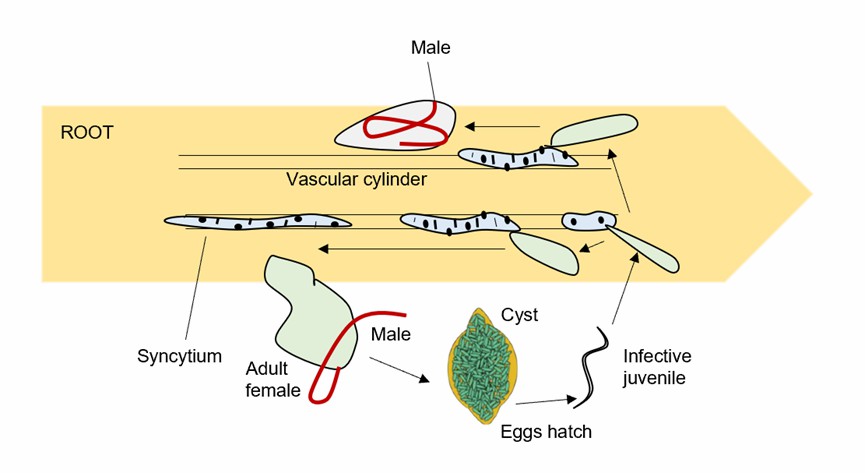Soybean is the most cultivated legume crop in the world. It is the source of high-quality plant oil and the main source of edible and feeding protein. Soybean cyst nematode disease is a major disease threatening the production safety of major soybean producing areas worldwide. It was first discovered in China, and now it has occurred in the United States, Japan, Korea, Egypt, Colombia, Canada, and other regions. The occurrence of soybean cyst nematode diseases can lead to soybean yield reduction; the yield reduction is 10%-20% in the year of average growth degree, the yield reduction is 30%-50% in the year of severe occurrence degree, and some even no grain harvest.
Lifeasible provides analysis of soybean cyst nematode diseases to help our customers worldwide in the field of plant science. Our platform is equipped with cutting-edge facilities and professional experts to support research. Here, we provide various services according to customers' demands.
 Fig.1 The life cycle of soybean cyst nematode.
Fig.1 The life cycle of soybean cyst nematode.
We help our clients analyze the biochemical mechanism of soybean cyst nematode diseases, such as amino acid-related analyses, including phenyl proline amino acid, antioxidant reductase, etc. In addition, we provide an analysis of secondary metabolites, including total phenols, chlorogenic acid, ferulic acid, flavonoids, lignin, etc.
Lifeasible provides cost-effect, high quality, and hassle-free services to our clients worldwide. We provide our clients with direct access to our experts and prompt responses to their inquiries. If you are interested in our services or have any questions, please feel free to contact us or make an online inquiry.